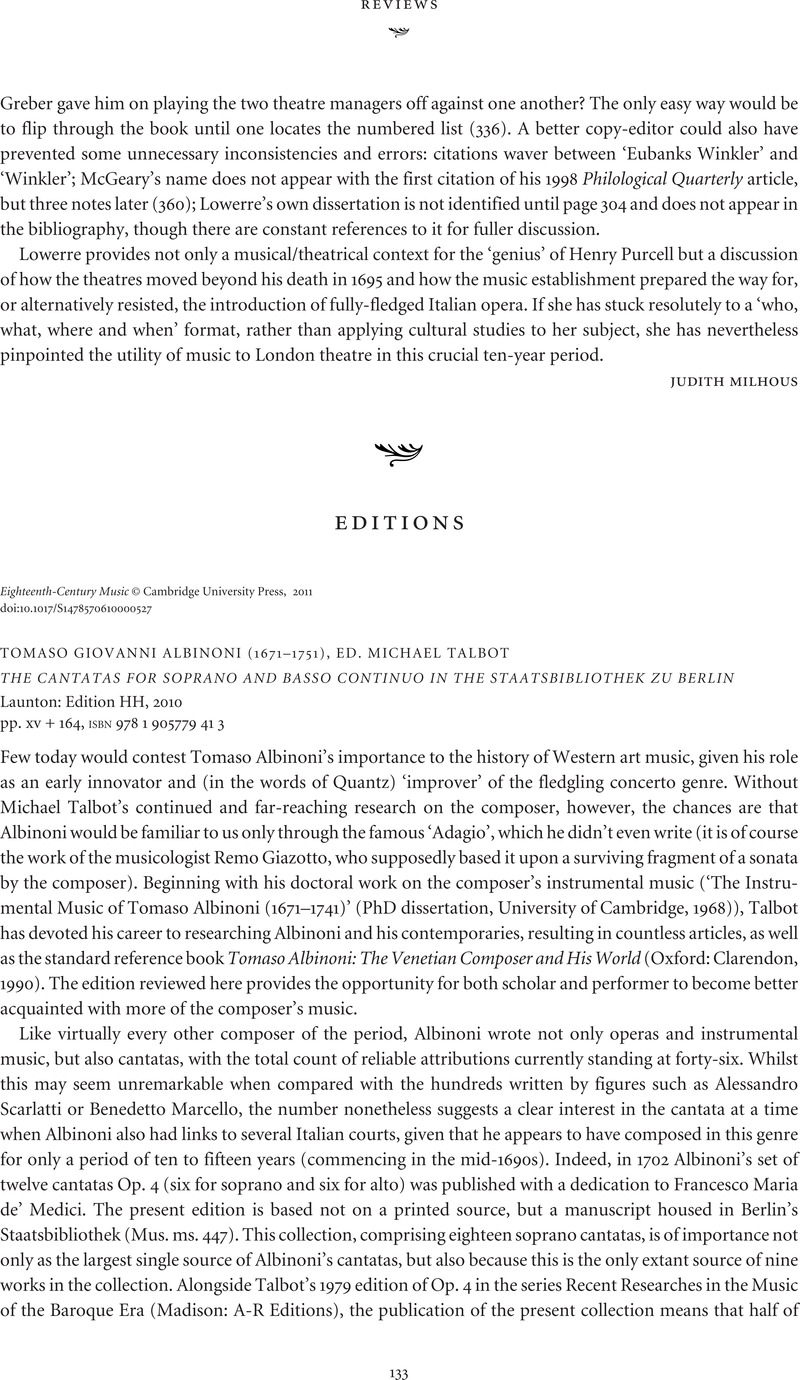No CrossRef data available.
Article contents
TOMASO GIOVANNI ALBINONI (1671–1751), ED. MICHAEL TALBOT THE CANTATAS FOR SOPRANO AND BASSO CONTINUO IN THE STAATSBIBLIOTHEK ZU BERLIN Launton: Edition HH, 2010 pp. xv + 164, isbn 978 1 905779 41 3
Published online by Cambridge University Press: 11 March 2011
Abstract
An abstract is not available for this content so a preview has been provided. Please use the Get access link above for information on how to access this content.

- Type
- Reviews: Editions
- Information
- Copyright
- Copyright © Cambridge University Press 2011




